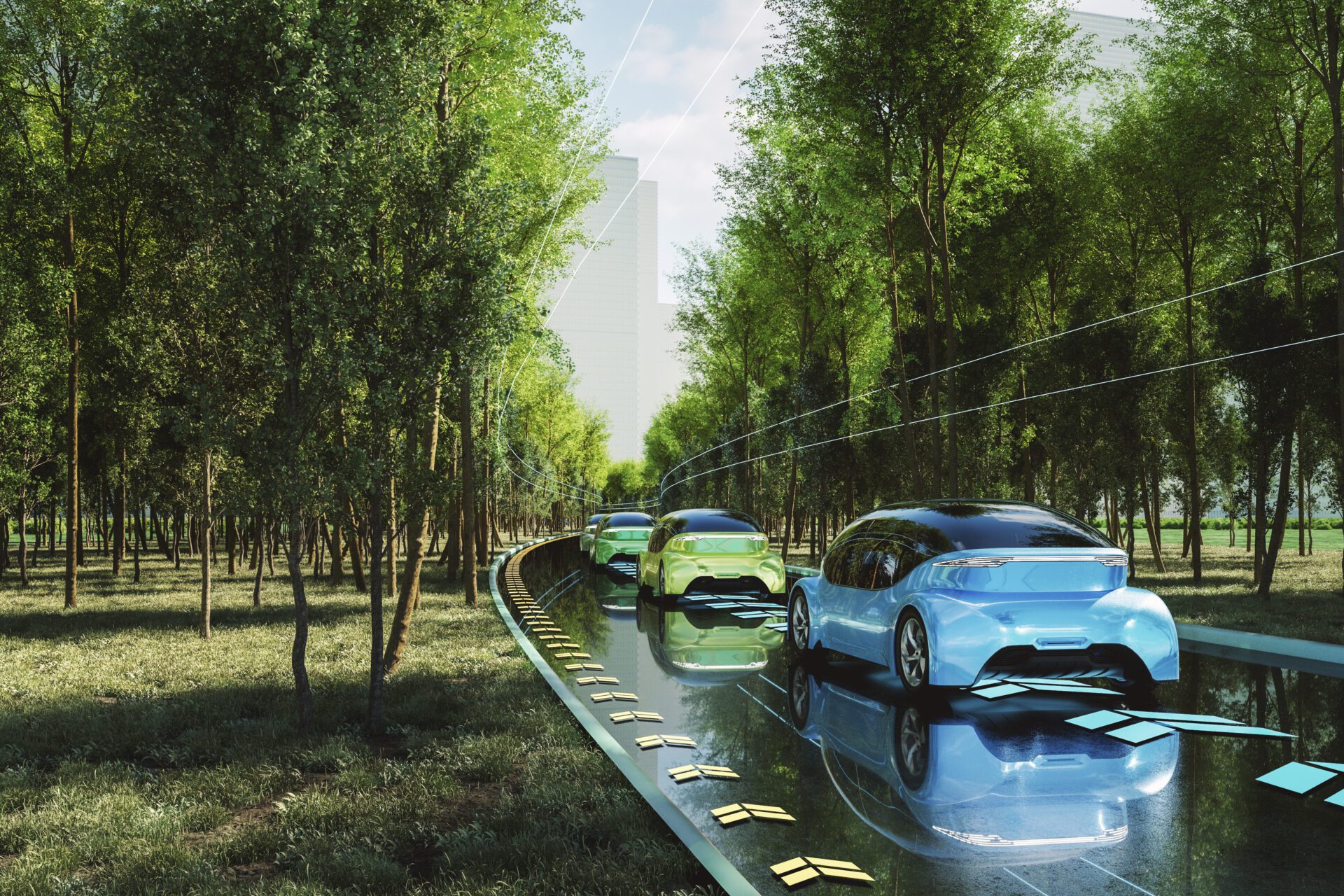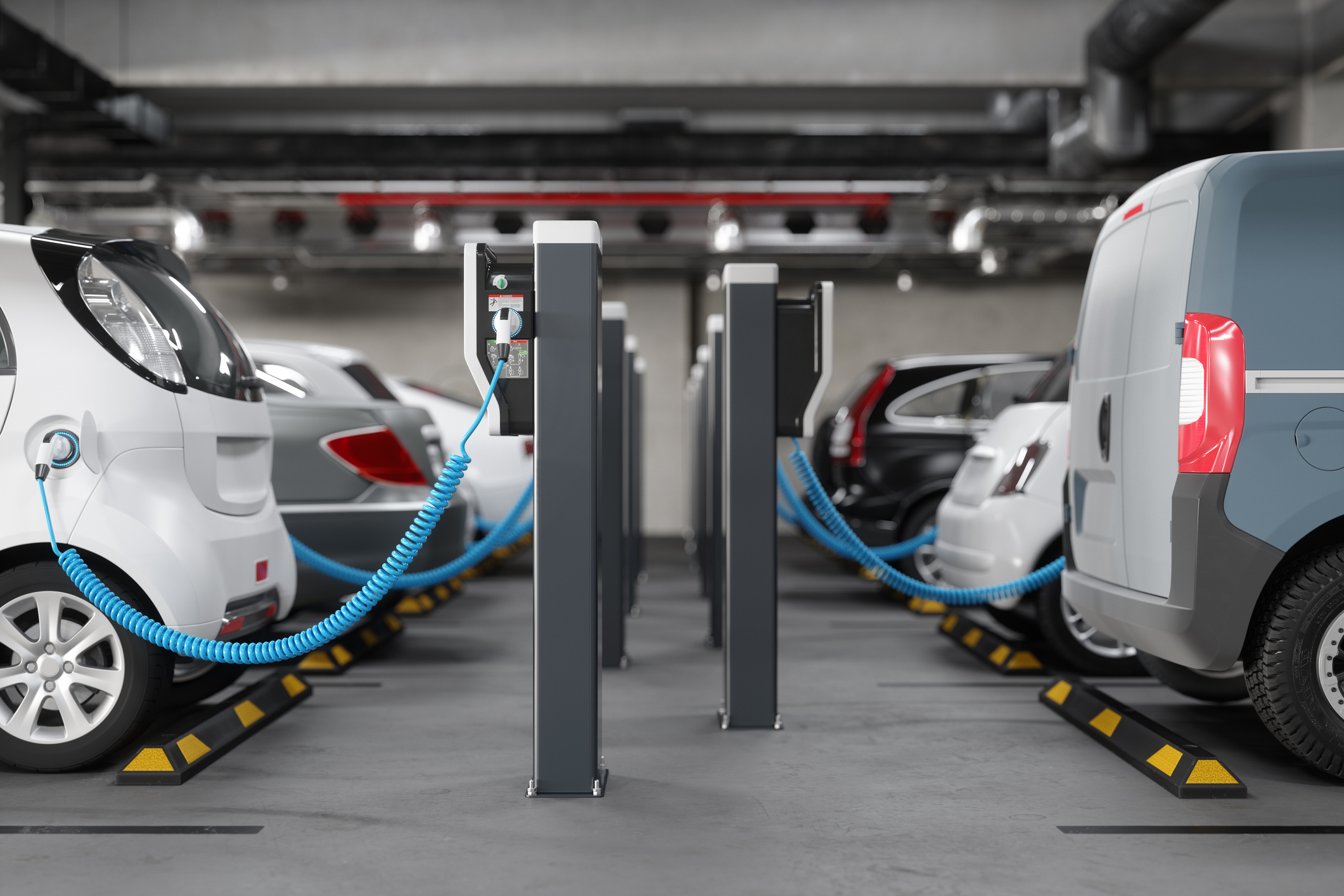Last year, the Biden administration announced steps to limit the production of fossil-fueled vehicles by 2030, a decision that has since gained new momentum with the passing of the Inflation Reduction Act. Mirroring these national policies, California took steps to phase out fossil-fueled vehicles by 2035, a legislative decision that already has legs in the market. The market growth of the global electric vehicle (EV) car sales perfectly illustrates the public and private shift toward the global decarbonization and electrification needed to mitigate climate change. These choices will impact not only the sale of personal electric vehicles, but on the variety of EVs on the market, including semi-trucks, drones, trains, aircraft, boats, and underwater vehicles.
It’s no doubt that increased reliance on electric vehicles will impact grid reliability to satisfy the increased demands that an electrified fleet promises. To meet rising demand, utilities have employed managed charging and demand flexibility programs, as well as distributed energy resource (DER) initiatives. Still, as electric vehicle production expands beyond personal vehicles, utilities should consider how best to serve the fleets of vehicles operated by large organizations like USPS, Amazon, AT&T, DHL, FedEx, and Waste Management, supply chain vehicles necessary to all communities.
What is an EV? It’s More Than Just a Personal Vehicle
Electric vehicles include any vehicle that relies on an electric motor instead of an internal combustion engine. The category also includes hybrid vehicles that use electric motors and internal combustion engines. For example, the Chevy Volt can use its 18.4 kWh 300 V lithium-ion battery to travel about 50 miles. Once the battery runs out of power, the vehicle uses an internal combustion engine to give it a longer range.
Types of Electric Vehicles
Innovative manufacturers already make a broad range of electric vehicles. Currently, those vehicles tend to have high prices that prevent consumers and businesses from buying them. However, prototypes and experimental designs reveal what to expect in the future.
eVTOLs (electric vertical take-off and landing)
You can think of eVTOLs as flying air taxis powered by electric motors. Industry experts predict that “vertiports” will start serving select populations as soon as 2024. By 2030, transportation technology will become available to a much wider range of people.
Some estimates show that by 2030, eVTOLs will provide approximately:
- 20,000 flights per day
- Fleet sizes of 1,000 vehicles
- 4,500 active pilots
The industry could serve about 70,000 passengers per day. Average flight times would last a mere 18 minutes, giving commuters, quick, efficient ways to reach their destinations. Based on these and other numbers, the industry could generate about $3 billion in annual revenue.
Semi-Trucks
American supply chains rely on semi-trucks that can travel between cities and towns. American Trucking Associations reports that trucks move 72.5% of U.S. freight by weight. Although essential to the economy, semi-trucks burn 45.6 billion gallons of fuel (mostly diesel) per year, which is around 26% of all annual greenhouse emissions.
Many freight companies express interest in EV semi-trucks because they want to avoid the high, volatile prices of diesel fuel and gasoline. To tackle this challenge head-on, several automotive manufacturers have already built EV semi-trucks. Examples include models from:
Currently, these semi-trucks have relatively short ranges that only make them useful for nearby deliveries. As on-vehicle solar panel and battery technologies improve, though, more companies will adopt these options for cross-country trips. Eventually, electric semi-trucks will become one of the most essential supply chain components.
Delivery Vans
Online shopping has driven growth in the last-mile delivery sector. Amazon delivered 4.2 billion parcels in 2020, making it the third-busiest delivery service in the United States (behind UPS and USPS). Online sales slumped slightly after the worst parts of the COVID-19 pandemic, but Morgan Stanley and other experts see ample room for growth. In response, Amazon has already ordered EV delivery vans from Mercedes-Benz and has plans to add more electric vehicles to its fleet.
Nationally, the U.S. Senate recently allocated $3 billion to help USPS introduce more EV delivery vans to its fleet. Over the next few years, expect to see USPS add nearly 85,000 EVs to American roads.
Cargo Ships
Consumers can already purchase fully electric watercraft for leisure and sports. Cargo ships matter much more to the future of transportation and how the grid will need to evolve. Norwegian company Yara International built the world’s first autonomous, electric cargo ship in 2021. The ship has a 7 MWh battery that powers two pods and two tunnel thrusters capable of reaching 13 knots. It has enough space to carry 60 shipping containers.
This is just the beginning of EV cargo ships. If Yara’s vehicle proves successful, more companies will follow. Fortunately, there are already innovators out there considering how to charge ships at sea, which would provide at least some relief for overburdened utility operations.
Trains
The potential for electric trains has existed for decades. Early railroad companies chose fossil fuels because they were less expensive than electricity during the early 20th century. The situation has changed dramatically, making electricity the preferred energy.
Some rail transit companies already plan to switch to electric trains that pull power from batteries instead of overhead wires. Canadian company CN is testing train batteries so it can meet the country’s ambitious environmental goals. Irrespective of any specific innovation, it’s easy to imagine a (near) future where trains pull railway cars that carry large batteries capable of fueling long trips.
The Current State of Managed Charging
Some people worry that the increased adoption of personal electric vehicles will put too much strain on the grid, although it seems unlikely that consumer EVs alone will prove overwhelming. However, the introduction of commercial EVs to the roads, rails, air, and waterways will put a tremendous amount of stress on energy companies and infrastructure. Fortunately, personal EVs currently only draw a minuscule amount of energy from the grid. Only 0.2% of grid power goes to charging electric vehicles.
How an EV Fleets Will Impact the Grid
That percentage will grow considerably over the next decades, though. Some experts think EVs could account for 24% of grid energy consumption once they make up a majority of vehicles. The growth will happen gradually, though, as governments and companies commit to decreasing emissions. The increase won’t happen all at once, so energy companies have opportunities to prepare.
However, it’s critical to note that energy companies must prepare for these changes. Climate change already puts an enormous strain on the grid as temperatures increase and storms become more destructive. Even if electric vehicles don’t put a significant strain on the grid, other factors make infrastructure increasingly unreliable.
Energy companies must update their technologies today so they can continue serving customers. Imagine the disruptions power outages will cause when businesses and households rely on the grid to charge all of their EVs. Soon, a power outage will likely have effects similar to gas shortages. The problem goes far beyond inconvenience. Large-scale power outages could break supply chains, shut down large sections of the economy, and stop all travel.
The Future of Charging
As electric vehicle production expands, the approach to managed charging needs to change. Federal plans primarily address the needs of drivers by installing about half a million fast chargers along highways. More innovative solutions are on the horizon, though.
The future of EV charging could include:
- Inductive charging – Inductive charging is a strategy that occurs while operating the vehicle. Installing charging plates in roadways could make wireless charging possible. This technology already exists for some mobile devices and has been demonstrated in vehicle prototypes.
- Megawatt charging systems – These systems can only take 30 minutes to give medium- and heavy-duty commercial trucks enough power to travel 200 miles.
- Nanoelectrical flow battery – A technology that charges batteries by replacing their fluids. This approach could work for practically any type of EV, including aircraft and watercraft.
- Offshore charging stations – As you might guess, offshore charging states are where watercraft could recharge batteries while waiting for clearance to dock.
How To Prepare for the Future of EVs
No one can predict precisely how millions of new electric vehicles will affect the grid. However, there are steps companies can start taking to make their infrastructure more responsive and flexible.
Load Forecasting
Load forecasting predicts how much energy an area will need before they need it. Forecasting software can analyze an incredible number of data points to estimate how factors like temperature, humidity, traffic patterns, amount of daylight, and regional expectations impact how much electricity areas will use.
Adopting load forecasting can help utilities keep a close eye on changes in their service area’s energy use. As such, utilities can manage increases in demand by adapting before the infrastructure experiences so much strain that equipment fails.
Demand Response Programs
Demand response programs help prevent your grid from getting too stressed during peak hours. Once you get customers enrolled in your program, you can gather data from their smart devices to take some control over their energy use. For example, you could adjust the temperature of smart thermostats so homes don’t use their air conditioning as much during peak usage.
When done well, participating customers don’t notice the small interruptions while you divert energy to where you need it. The person’s air conditioner might stop running for just five minutes. That’s a tiny amount of electricity on an individual level, but it has a significant influence when you get thousands of households involved.
Distributed Energy Resources (DERs)
Distributed energy resources (DERs) take on some of the workload so you don’t need plants to generate as much electricity. Instead of firing up a peaker plant, you could tap into the electricity created by rooftop solar panels connected to your grid.
Distributed energy resources management system (DERMS) software is the control mechanism that helps utilities organize their demand flexibility events. The most effective DERMS tools will also let you gather data and analyze KPIs, coordinate distributed energy resources to meet high energy usage as needed, and communicate with participating customers to keep them informed.
Virtual Power Plants
Turning on a peaker plant costs a lot of money. You can avoid that expense by using the DERs connected to your grid as a virtual power plant. Instead of firing up your peaker plant on a hot summer day, customers can elect to allow the use of their excess solar energy as a virtual peaker plant. With enough participants, individual solar systems can help contribute additional power to the grid without the need for costly and unclean peaker plants.
Planning for the Future of Transportation Starts Now
Utilities already know that the future of electric vehicle transportation will include large fleets of EVs operating on roads, rails, waterways, and in the sky. Waiting will only force utilities to spend more money catching up to satisfy consumer energy demands. By planning for the future today, utilities can position their operation for continued success, including happier customers, lower expenses, and higher revenues.





